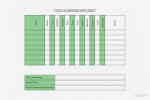Step 4 of 5•6 minutes read
ALLERGENIC Contamination and Control
Remember: allergens in food cause adverse reactions!

Catering for large groups means you will defiantly encounter various allergens
Symptoms of Allergic Reactions
Even the tiniest amount of an allergen can cause a reaction with some people being more susceptible. Below is a list of symptoms of allergic reaction.
- Shortness of breath/wheezing,
- Swelling of tissue in the mouth and throat,
- Difficulty in swallowing and speaking,
- Severe asthma,
- Cramps/gastrointestinal symptoms,
- Generalised flushing of the skin,
- Rash/hives,
- Alterations in heart rate,
- A sudden feeling of weakness,
- Collapse and unconsciousness,
- Death.
There is a difference between a food allergy and food intolerance.
A true food allergy causes an immune system reaction that affects numerous organs in the body and it can cause a range of symptoms. In some cases, an allergic food reaction can be severe or life-threatening. In contrast, food intolerance symptoms are generally less serious and often limited to digestive problems.
Food allergic reactions can be very serious and controls must be put in place throughout food production from farm to fork.
Watch this video to learn more about the most common food allergens.
The Common Allergens
To recap from the video, here is an image of the most allergens that you are required to know. Always keeps yourself updated in case more allergens emerge and have to be identified as part of food safety management.

Common allergens
As mentioned in the video, all food handlers should be aware of the allergens in food. Good practice is to have one person responsible for allergens and the communications to guests and crew.
Below is an example allergen data sheet that can be produced for all dishes. This clearly outlines the allergens in each and can be communicated to the food service crew. Menus can have allergens labelled and signage on buffets can inform guests and crew.

Food allergens data sheet.